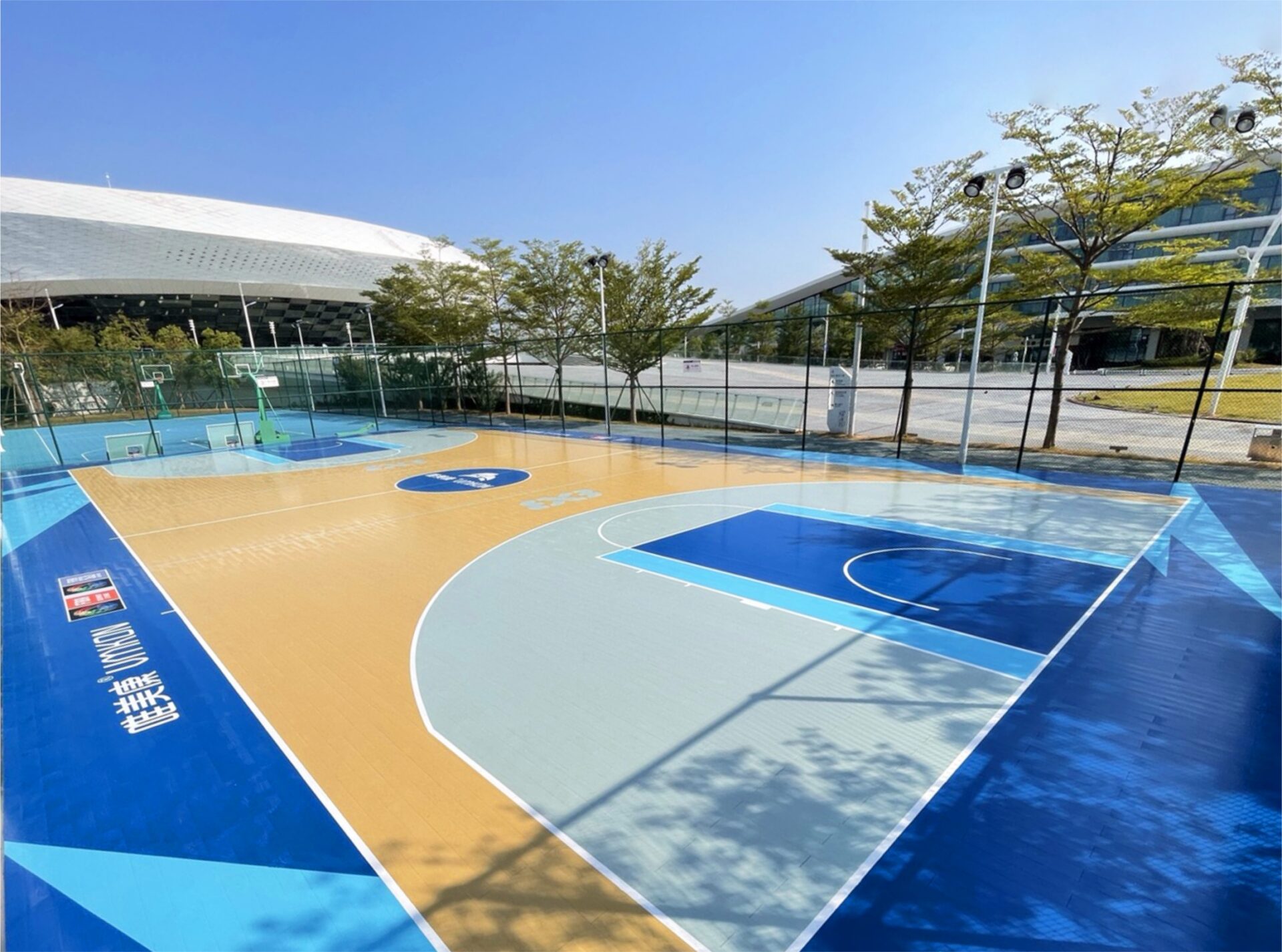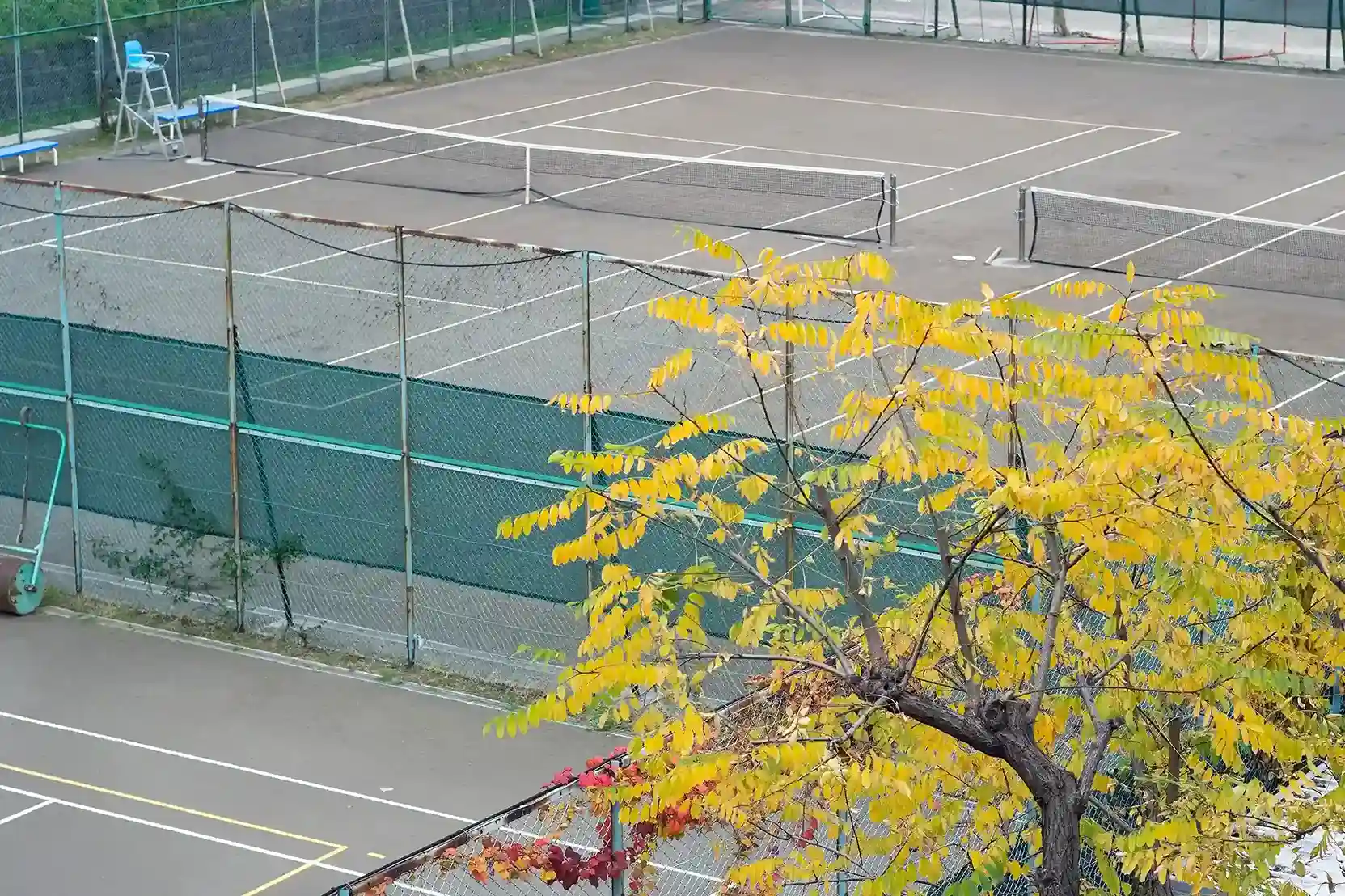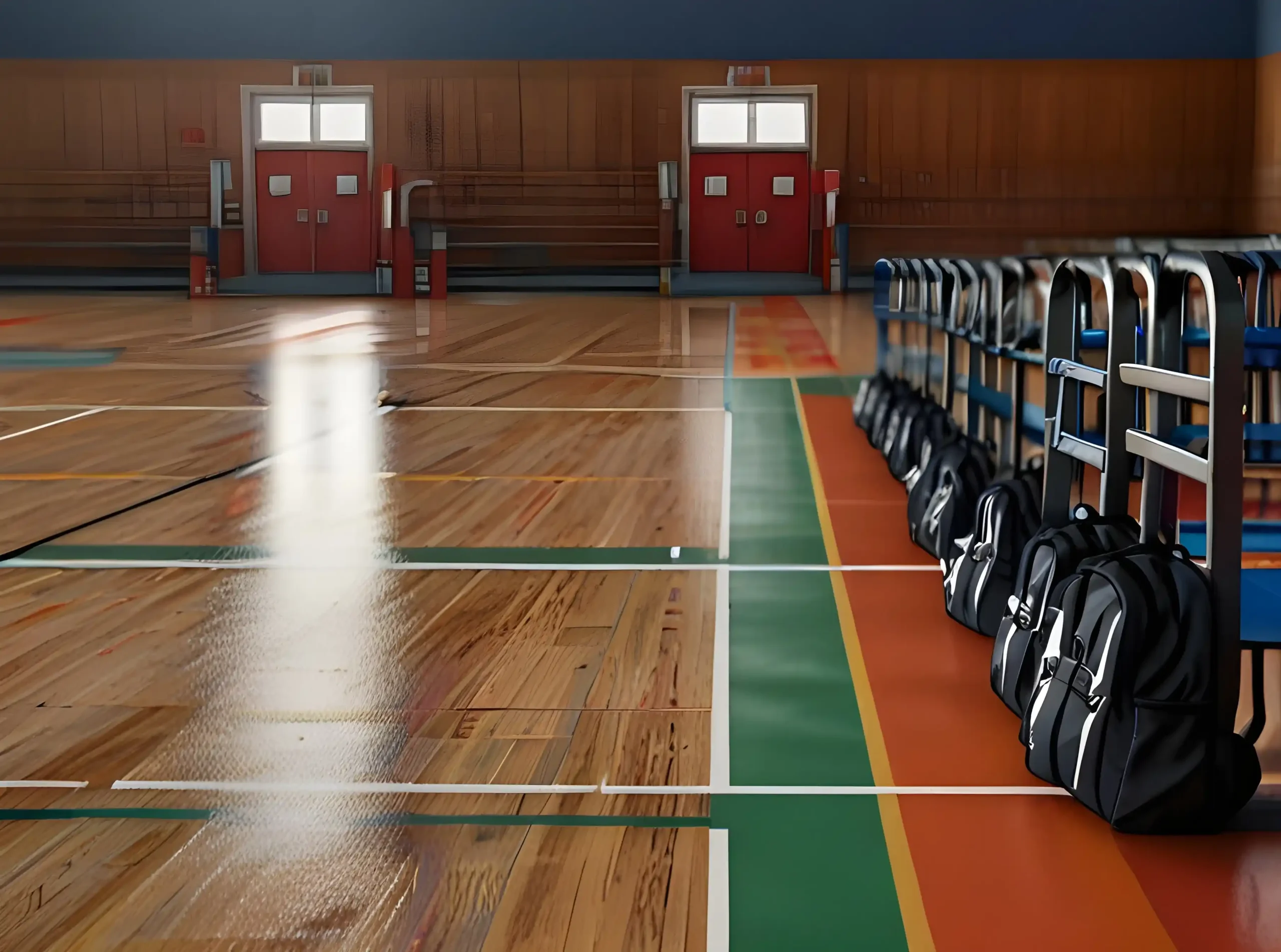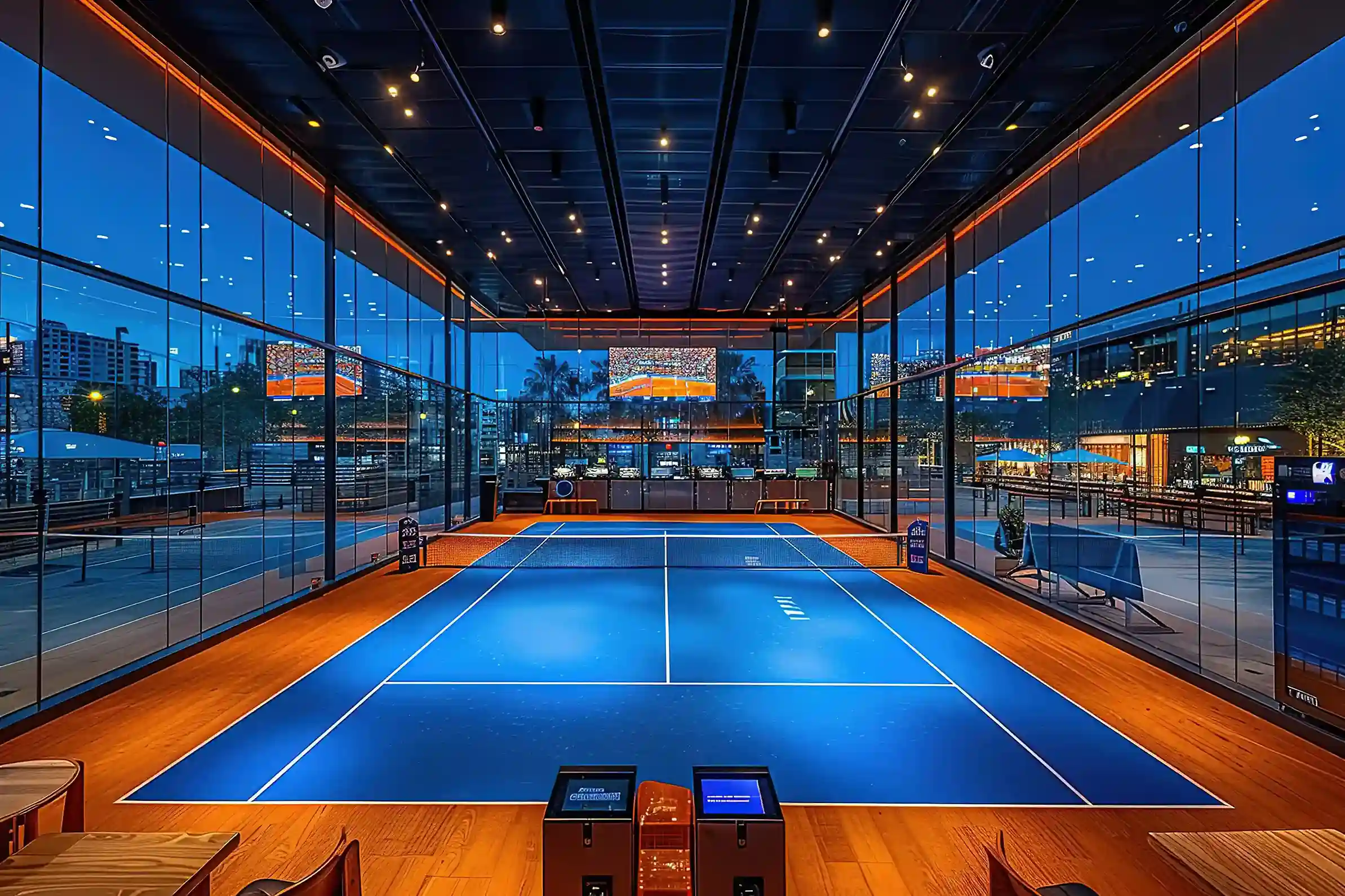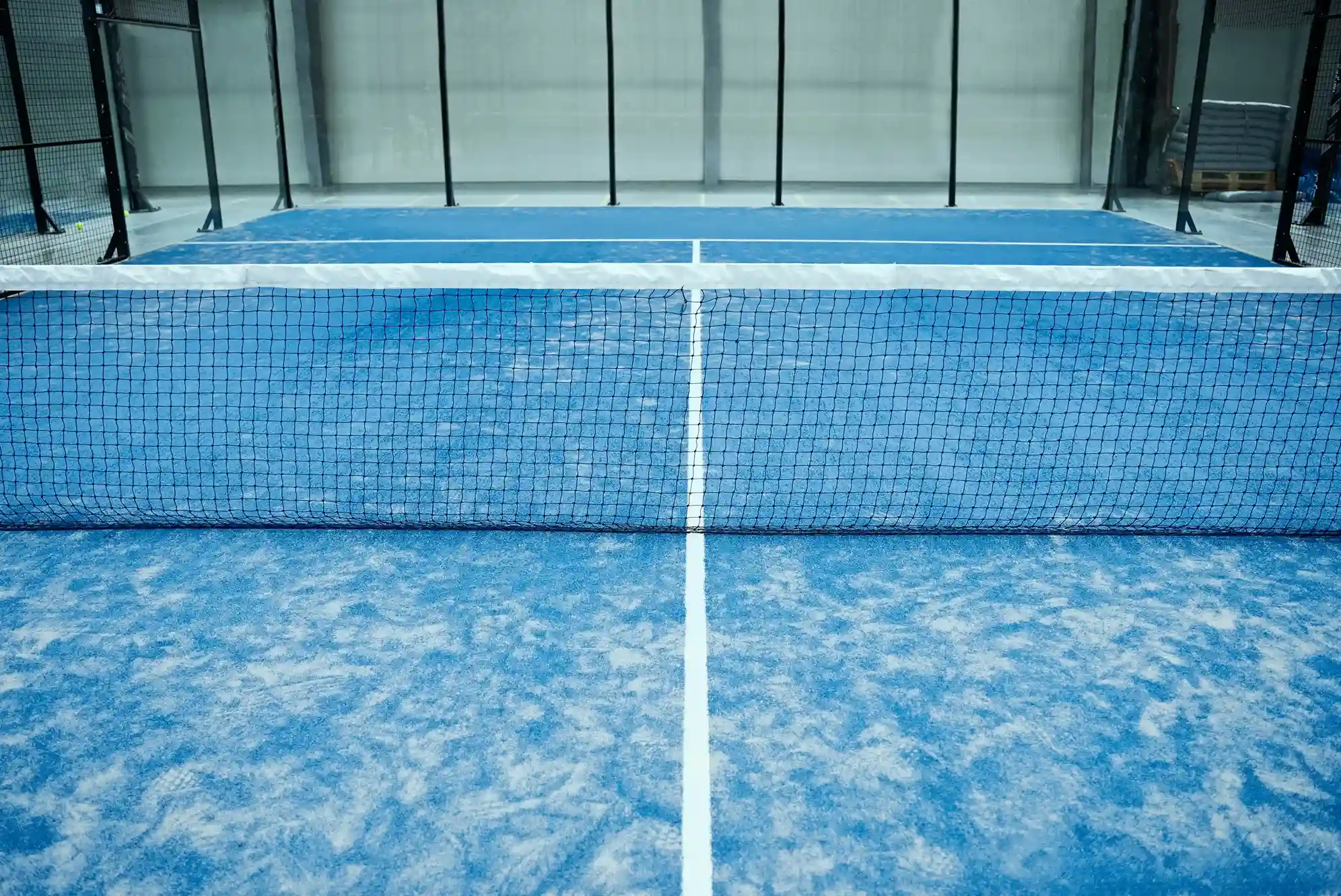Outdoor basketball courts are enjoying a surge in popularity, becoming a central community feature in urban parks, schools, and even personal properties. However, one of the most critical considerations when building an outdoor court is selecting the right flooring material. With durability, safety, and performance in mind, you might be wondering whether hardwood flooring, a long-standing favorite for indoor basketball courts, can be used outdoors.
This article explores the suitability of hardwood flooring for outdoor basketball courts, investigates alternative options, and provides practical advice on installation and maintenance.
Understanding Hardwood Flooring and Its Common Uses
Hardwood flooring has long been considered a premium option for indoor basketball courts. It is typically made from high-quality maple wood due to its durability, aesthetic appeal, and ability to provide the ideal level of grip and bounce for athletes. Widely recognized for its polished finish, hardwood floors are used in arenas and gyms around the world, offering excellent performance conditions and a sleek, professional appearance.
However, it’s important to understand that hardwood flooring is optimized for indoor use. Its composition and properties make it susceptible to external factors like weather, temperature fluctuations, and moisture, naturally raising questions about its suitability for outdoor applications.
Why Hardwood Flooring is Not Suitable for Outdoor Basketball Courts
While hardwood is admired for its elegance and functionality indoors, its characteristics make it less than ideal for outdoor basketball courts. Here’s why:
1. Susceptibility to Weather Damage
- Hardwood flooring is highly sensitive to environmental factors such as rain, snow, and UV exposure.
- Water and moisture can cause warping, swelling, and cracking, effectively ruining the surface over time.
2. Maintenance Challenges
- Maintaining hardwood in an outdoor setting requires constant care to prevent rot, discoloration, and wear.
- Protective treatments, while useful, need frequent reapplication, significantly increasing costs and labor.
3. Durability Concerns
- Outdoor settings demand flooring materials capable of withstanding constant weather exposure and heavy use. Hardwood does not meet these criteria without substantial modification and maintenance.
Given these limitations, hardwood is generally not recommended as outdoor basketball flooring unless exceptional measures are taken to weatherproof it—which can often render the project impractical.
Alternative Flooring Options for Outdoor Basketball Courts
Thankfully, there are several sports flooring options tailored specifically for outdoor use. These provide excellent durability, safety, and performance while being better suited to weathering the elements.
1. Acrylic Sports Surfaces
- Benefits:
- Durable and weather-resistant.
- Provides uniform performance with minimal maintenance.
- Drawbacks:
- Slightly less give compared to rubber flooring, resulting in reduced shock absorption.
- Best for:
- Public courts and recreational facilities.
2. Rubber Flooring
- Benefits:
- Excellent grip and impact absorption, reducing stress on players’ joints.
- Long-lasting and requires minimal upkeep.
- Drawbacks:
- Higher initial cost compared to other materials.
- Best for:
- Schools and high-traffic courts prioritizing player safety.
3. Polypropylene Tiles
- Benefits:
- Modular and easy to install.
- UV-resistant and designed for outdoor durability.
- Drawbacks:
- May provide less cushioning than rubber.
- Best for:
- Personal and community courts.
4. Biomass Sport Wooden Flooring (e.g., VMKON’s Option)
- Benefits:
- Eco-friendly and cost-effective.
- Durability designed to mimic the performance of indoor hardwood surfaces under outdoor conditions.
- Drawbacks:
- May require professional installation.
- Best for:
- Professional-grade courts and sports enthusiasts looking for sustainable options.
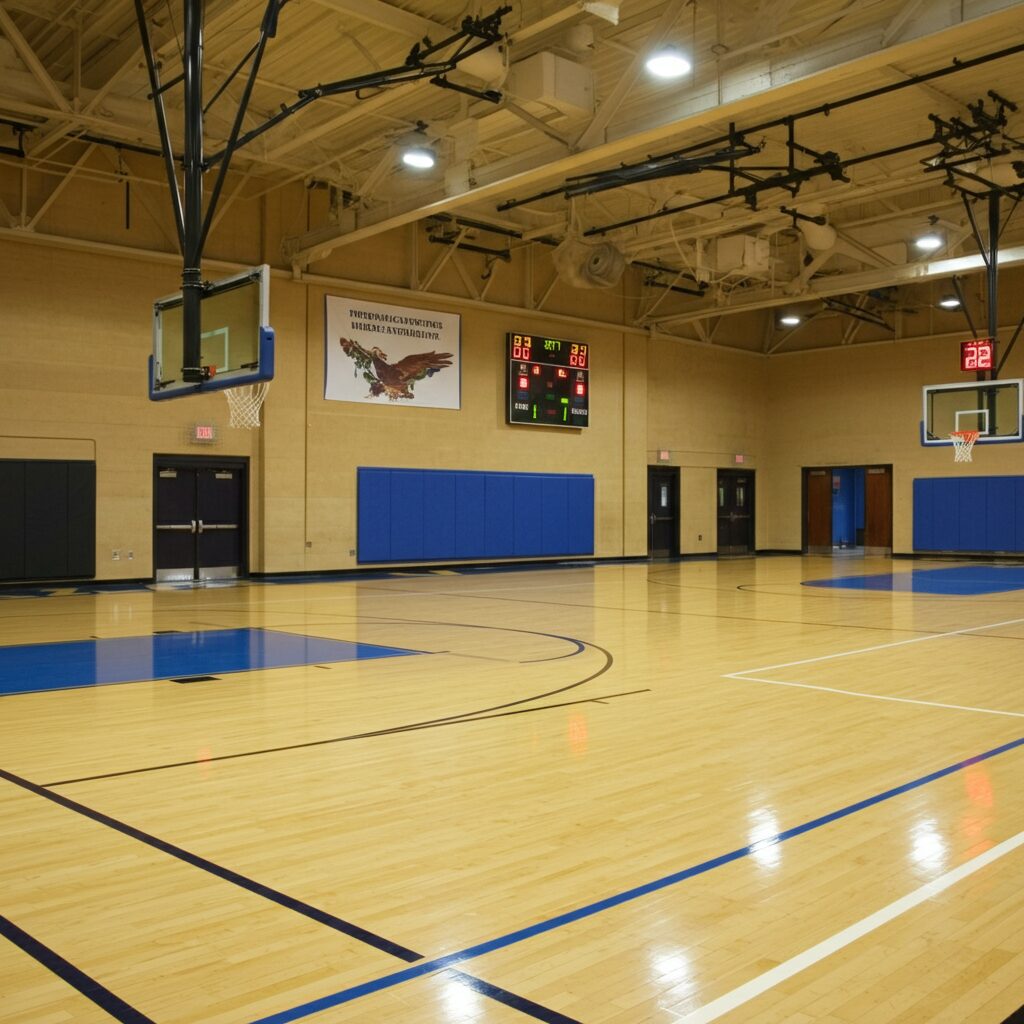

Comparing Outdoor Basketball Flooring Options
| Material | Durability | Cost | Maintenance Required | Cushioning |
|---|---|---|---|---|
| Acrylic Sports Surfaces | Very High | $$ | Low | Moderate |
| Rubber Flooring | High | $$$ | Low | Excellent (Impact Heavy) |
| Polypropylene Tiles | High | $$ | Low | Moderate |
| Biomass Wooden Flooring | High | $$$ | Medium | Excellent |
Each material offers unique advantages to suit different needs, and the choice should be guided by considerations such as budget, frequency of use, and required performance levels.
Installation and Maintenance of Outdoor Sports Flooring
Once you’ve selected the ideal material, properly installing and maintaining your outdoor basketball court will ensure longevity and optimal play. Here’s a breakdown of what to expect:
1. Installation
- Professional Installation Required:
- Materials like VMKON’s biomass sport wooden flooring and polypropylene tiles typically require specialized knowledge for proper installation.
- Ensure a level and stable foundation to enhance performance and reduce wear.
- DIY-Friendly Options:
- Some polypropylene tiles are modular and convenient for DIY installations.
2. Maintenance
- Acrylic and Rubber Flooring:
- These require minimal upkeep, usually just regular cleaning to remove dirt and debris.
- Polypropylene Tiles:
- Occasional checks to ensure proper interlocking and washing for cleanliness.
- Biomass Wooden Flooring:
- Maintain by clearing debris and inspecting for surface wear periodically.
With consistent care, most outdoor basketball flooring materials can provide years of dependable performance.
Why VMKON is the Perfect Partner for Your Outdoor Basketball Court
When it comes to premium sports flooring, VMKON stands out as a trusted leader, offering innovative solutions tailored for various sports applications. Our biomass sport wooden flooring combines the best of both worlds by delivering the performance and aesthetics of hardwood with the resilience needed for outdoor courts.
- Eco-Friendly: Made from sustainable and renewable materials, aligning with environmentally-conscious values.
- Durable: Designed to endure outdoor conditions without compromising on performance.
- Customizable: Modular and adaptable for courts of any size or specification.
If you’re looking for reliable sports flooring options, including solutions for professional and recreational outdoor basketball courts, consider VMKON’s expertise and product portfolio.
FAQs About Outdoor Basketball Court Flooring
Q1. Can hardwood be treated for outdoor use?
Yes, but it requires extensive weatherproofing treatments that can be costly and only moderately effective in the long term.
Q2. Which flooring option offers the best value for money?
Polypropylene tiles often balance affordability, durability, and performance, making them a popular choice.
Q3. How long does outdoor sports flooring last?
With proper care, most high-quality sports flooring materials can last 8–15 years or longer.
Choosing the Right Basketball Flooring? Contact Us Today
When deciding on the best flooring for outdoor basketball courts, durability, performance, and maintenance are key considerations. While hardwood flooring might not be suitable for outdoor use, innovative materials like VMKON’s biomass sport wooden flooring offer a fantastic alternative.
Elevate your court with premium options tailored to your needs. Contact us now for a consultation and learn more about how VMKON can make your outdoor basketball court dreams a reality.

